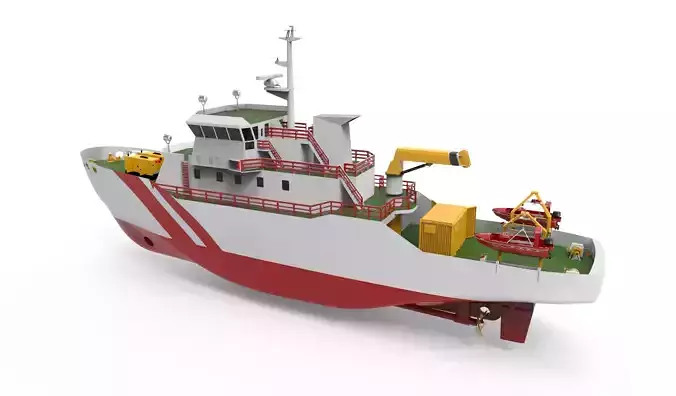1/8
A tugboat or tug is a marine vessel that manoeuvres other vessels by pushing or pulling them, with direct contact or a tow line. These boats typically tug ships that cannot move well on their own, such as those in crowded harbours or narrow canals,[1] or those that cannot move at all, such as barges, disabled ships, log rafts, or oil platforms. They are powerful and durable for their size. Some are ocean-going, some are icebreakers or salvage tugs. Early models had steam engines, and modern ones have diesel engines. Many have deluge guns, which help in firefighting, especially in harbours.Seagoing tugs (deep-sea tugs or ocean tugboats) fall into four basic categories:
The standard seagoing tug with model bow that tows almost exclusively by way of a wire cable. In some rare cases, such as some USN fleet tugs, a synthetic rope hawser may be used for the tow in the belief that the line can be pulled aboard a disabled ship by the crew owing to its lightness compared to wire cable.The notch tug can be secured by way of cables, or more commonly in recent times, synthetic lines that run from the stern to the tug to the stern of the barge. This configuration is generally used in inland waters where sea and swell are minimal because of the danger of parting the push wires. Often, this configuration is employed even without a notch on the barge, but in those cases it is preferable to have push knees on the tug to stabilize its position. Model bow tugs employing this method of pushing nearly always have a towing winch that can be used if sea conditions render pushing inadvisable. With this configuration, the barge being pushed might approach the size of a small ship, with the interaction of the water flow allowing a higher speed with a minimal increase in power required or fuel consumption.The integral unit, or integrated tug and barge (ITB), comprises specially designed vessels that lock together in such a rigid and strong method as to be certified as such by authorities (classification societies) such as the American Bureau of Shipping, Lloyd's Register of Shipping, Indian Register of Shipping, Det Norske Veritas or several others. These units stay combined under virtually any sea conditions and the tugs usually have poor sea-keeping designs for navigation without their barges attached. Vessels in this category are legally considered to be ships rather than tugboats and barges must be staffed accordingly. These vessels must show navigation lights compliant with those required of ships rather than those required of tugboats and vessels undertow.Articulated tug and barge (ATB) units also utilize mechanical means to connect to their barges. The tug slips into a notch in the stern and is attached by a hinged connection, becoming an articulated vehicle. ATBs generally utilize Intercon and Bludworth connecting systems. ATBs are generally staffed as a large tugboat, with between seven and nine crew members. The typical American ATB displays navigational lights of a towing vessel pushing ahead, as described in the 1972 ColRegs.
REVIEWS & COMMENTS
accuracy, and usability.








